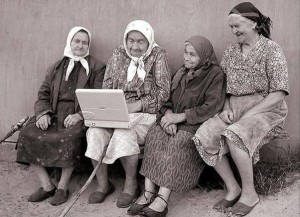I maybe only a “one person company”, but I always work together in partnerships to develop and deliver business. The “one plus one makes three” certainly works for me.
One of these partnerships is called 360 Careers. We are all experts in the field of personal development and we mainly concentrate on the in-flow, flow-through and out-flow of talented professionals in companies. Professionals for professionals.
 Together we have developed the Peercoaching & Consultation program, which we had the honnor to present last week during a mini-seminar to 13 prestigious consultancy and lawfirms.
Together we have developed the Peercoaching & Consultation program, which we had the honnor to present last week during a mini-seminar to 13 prestigious consultancy and lawfirms.
The concept of Peercoaching & Consultation is quite new in The Netherlands. If you want more information on our program, do not hesitate to contact me or go to the website www.360careers.nl.
In this blog-post I would like to introduce a technique I use during peercoaching and other workshops and that is Speed-dating.
If you have ever have speed-dated to find an interesting partner to date, you know the principle:
Talking to many people during a short time with the aim to find something out.
The method of speed-dating is therefor excellent to gather a lot of valuable information in a very efficient way.
How to make it work in groups of people, either in a professional/business environment or in a personal development sort of way:
1. Ask everybody to write down a question they have about something they would like to receive information/advise/suggestions on. The question should be short and crisp, but give enough information for the other person to give valuable feed forward on.
For example: “I want to give feedback to someone, but I am afraid that this person will feel offended. How would you advise me to handle this?”
2. Divide the group in two subgroups. All the persons in group A are called “person A” and all the people in group B are called “person B”
3. Ask everybody of the group A to find somebody else of group B to sit or stand opposite from.
4. Give first the “person A” the chance to ask their question to “person B” and person B to respond. This could be done in say, 2 minutes. Then have “person B” ask their question to “person A” and give again 2 minutes for the interaction.
5. Depending on the amount of people in the group and the situation, there are multiple ways of making the people change partners after these 4 minutes of interaction:
- have all the “persons A” sit down at a table and have “the persons B” switch table after 4 minutes, till all “persons B” have spoken to all “persons A”.
- have all “persons A” stand in a circle, with their faces turned outward. Have all “persons B” stand opposite a “person A”. After 4 minutes of interaction, have all “persons B” step to their right untill they face the neighbour “person A”. Let this continue till all “persons B” have spoken all “persons A”
- have all “persons A” stand in a long row with opposite each “person A” a “person B” facing them. After each 4 minutes the persons B step to the left to face the neighbour person A. Off course the last of the row, needs to go to the front of the row, when needed.
6. It helps if somebody is the time-manager, who gives a signal every two minutes, so the people know when to switch sides or places.
It is amazing how much energy this type of activity gives and the wealth of good and valuable information you can find.
There is no limit to the time you let people talk to eachother, but to keep the energy high and focussed on the question, do not make it longer than 5 minutes per person.
For more technical or complex questions you can also use the method, but you better make sure you invite experts on the topic, who can really contribute and do not need to much explanation before they can brainstorm on the question.
Have you ever used this method and what other methods do you know that also help well? Let us learn from you and leave us your comments.
This blog-post is bi-weekly and you can get it directly in your inbox if you subscribe.
Esther Celosse
Follow-it

The beehive game.
I have played this networking / speed dating game with 700 people.
We were divided in groups of 6, sitting on chairs in small circles. Everybody wrote down his question. One person of the group “flew” out to another group, carrying a question of somebody else in the group.
The messenger posed the question and if someone knows an answer or can really help, he gave his business card to the messenger. The messenger visited as many groups as he can in a limited time frame. This could be 5 or 10 minutes. After this time, he went back to the group and handed over the collected business cards to the person that posed the question.
It was a lot of fun to do and with amazing results.
After the meeting, I had a nice stack of business cards of people that could and were willing to help me.
To get the most out of it, prepare your question very well. And of course, carry enough of your own business cards.